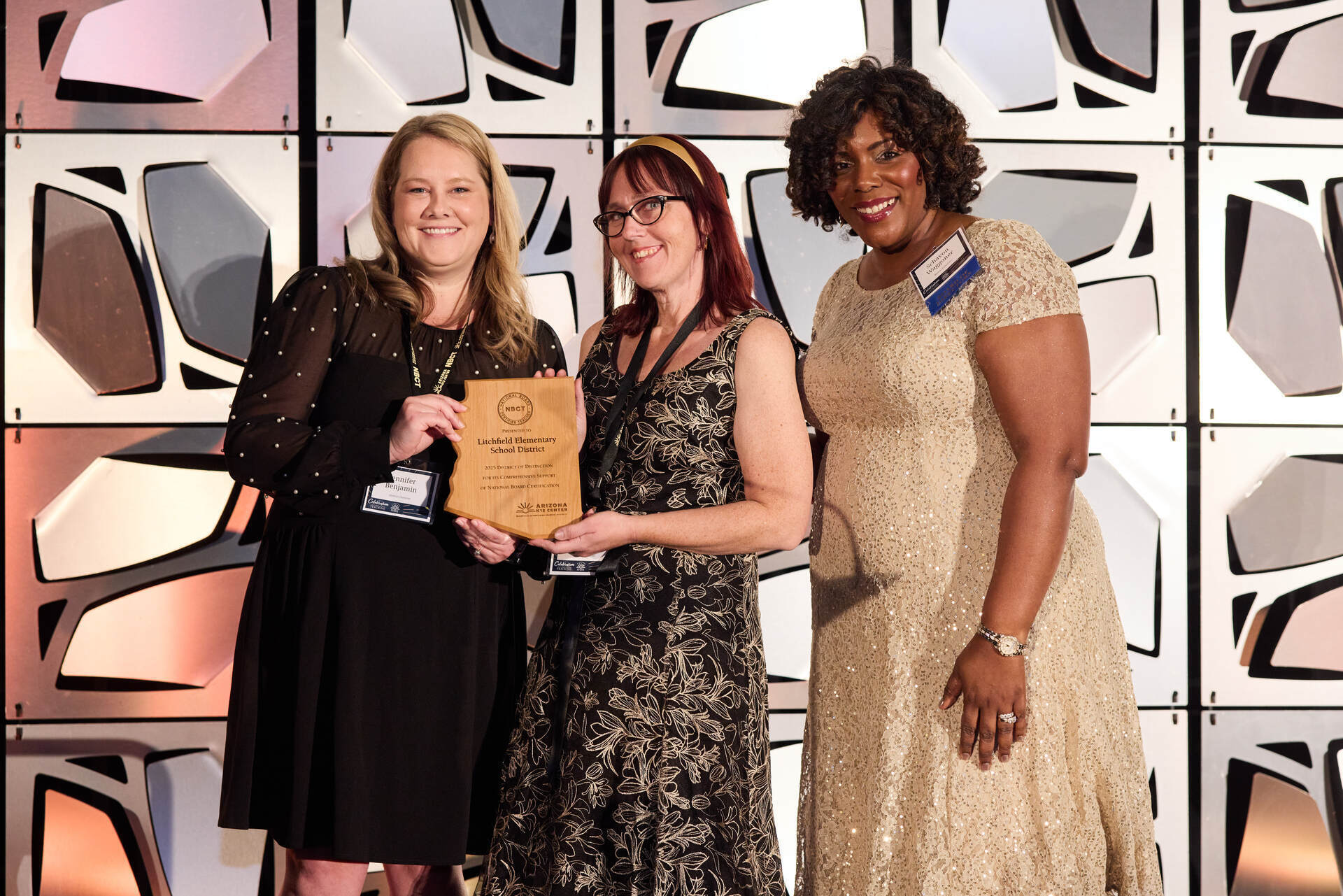April 26, 2016
What We’re Learning
We interview Arizona universities about what they're teaching teachers — and how it's changed in the past decade.
Arizona is undergoing a critical teacher shortage, and it isn’t exactly hard to see why.
A PK-12 educator in Arizona isn’t expected simply to be an excellent instructor, but to be it all: a nurse, a mentor, a babysitter, a social worker — you name it. And they’re expected to do it in the face of abysmal budget cuts, growing global competition, expansive state poverty, and public scrutiny. Oh, and they’re expected to do it for a tiny annual salary — one unlikely to support a family, student debt, or further professional development.
Deep breath.
So how are our state colleges fighting to graduate dynamic teachers that are more likely to stay in the profession? We sat down with voices from Arizona’s three state universities to get an inside scoop on how preparing teachers for today’s classrooms is different than years past.
Northern Arizona University (NAU), The University of Arizona (UA), and Arizona State University (ASU) respectively boast unique collegiate education programs that graduate strong teacher-leaders. But the one facet of preservice training that all three agree has evolved in the past decade? The increase in early field experiences.
Mari Koerner, Ph.D., Dean of ASU’s Mary Lou Fulton Teacher’s College, advocates that the most important feature a teacher preparation program can provide its future educators is extended supervised time with partnership schools. “The big lesson we’ve learned is that we can’t, shouldn’t, and don’t want to do it alone.”
Strong and intentional partnerships with Arizona’s K-12 campuses and districts are the pride and focus of each of our state universities as they strive to provide preservice teachers with more and longer exposure and interaction with the profession. Kathy Bohan, Ph.D., Associate Dean of NAU’s College of Education, points out that multiple early field experiences “provide teacher candidates with authentic, hands-on opportunities related to classroom expectations, routines, school culture, and planning and delivering instruction to small and large groups of students.”
UA’s Renée Clift, Ph.D., Associate Dean and professor at its College of Education, says Arizona’s programs have also become more field-based. “We view field placements as co-teaching and co-responsibility for student learning. We want our students to be of help in their placements.”
Not only do these efforts benefit student teachers, but increasing the focus on field-based experience helps Arizona’s districts recruit new professionals. “As a result of these expanded fieldwork experiences, district leaders have stated that they will be able to help train these future teachers to better understand and adapt their teaching strategies to match the characteristics and needs of the students in their district,” Bohan states.
Another way that our universities have stepped up to the plate has to do with upholding standards in an environment that continuously demands higher accountability — and it all starts at the heart of teaching: the needs of our students. If we take a step back in history, we can see that generations ago, American citizens could make a good life for themselves with little formal education.
“When my mother immigrated from Italy, you could get a decent job with a fifth-grade education,” Koerner illustrates. Today? Not so much. “Now, without a high school degree, it’s virtually impossible to get a decent job, to own a home. Today’s children have to be more literate, and they have to be able to graduate from high school.”
In simple terms, our preservice teacher programs have to up the ante. “We’ve made our programs more rigorous. We’ve made our prerequisites more rigorous,” Koerner asserts. And for some candidates, the demands prove too much. “Students self screen and opt out on their own, realizing it’s not the easy career option they thought. Our students are held to a high professional standard.”
At NAU, Bohan recognizes that today’s learners “demand more and deeper learning opportunities. Teachers of today need to be multifaceted facilitators who can meet the needs of ever-diverse and eager learners.”
Today’s preservice teachers are also being trained to grapple with Arizona’s pressing diversity issues. NAU’s student field experiences align with the school’s mission to prepare educators for work in urban, rural, and reservation settings. For ASU, that means longer student residencies in schools with high poverty, immigration, and segregation rates. UA echoes these values, stressing the power of teacher education to build better citizens.
Clift asserts that diversity has inherited strengths — strengths that the UA’s program wants to convey to its future teachers. “Teacher programs can help students understand the incredible power of diversity,” she states, pointing to the ability for these students to speak multiple languages and learn from one another in very heterogeneous groups.
“The diversity of our P-12 students continues to increase,” Bohan adds. “More varied learners entails creating opportunities for learners to engage in learning from multiple points of entry, and celebrating differences in learning.”
Of course, what teacher training looks like has changed in some other key ways. Take perhaps the most obvious progression: technology.
“We don’t teach people how to thread film through the projector anymore,” laughs Clift. “We’re dealing with SMART Boards and iPads. We want to use tech appropriately to excite and engage students.”
Veteran teachers have learned over time that integrating technology is much more complicated than parading cool new gadgets to grab students’ attention; preservice teachers are trained from the get-go that technology is all-encompassing and pervasive. Koerner says, “It’s the coming down of classroom walls. Now, because of virtual technology, classrooms and learning, and teaching extend in ways we never imagined. The creation and notion of knowledge have changed, just as the notion of teaching and learning has changed.”
Though each are contagiously passionate about her university’s program, all of our spokespersons return to Arizona’s teaching shortage as if they are charged with planting extraordinary seedlings into toxic soil.
The exciting advancements of each state college’s program make it even more heartbreaking to hear that no matter how innovative and transformative our preservice programs are, the problem isn’t going to be solved unless our teachers have better support systems — namely financially.
“Our biggest problem is salary. The salaries in Arizona are so bad,” Clift laments. And when it comes to recruiting talented people into the profession, that gets tricky when great students have many options when it comes to a career path, and the typical starting teacher’s salary — which often comes in at under $35,000 annually — isn’t much of an incentive.
“The idea that salary doesn’t matter is magical thinking. Really? So when teachers go to Fry’s, do they have some kind of coupon that says, ‘I love children’, and that pays for the groceries?” Koerner says. Ultimately, saying that teachers’ affection for their students isn’t justification not to pay them well. “Having a supporting work environment matters.”
But despite that ominous cloud, we continue to applaud the dignity inherit to education — and our state schools striving to produce highly competent teacher professionals.
“Teaching has always been a noble profession. It is the profession which births all others,” Bohan says.
“Teachers are public servants,” Koerner states. “They’re committed to the welfare of the community and build the foundation of democracy.”
Clift ends with an echoing truth: “We need to celebrate teachers for all that they do and are doing, and then we need to help them all that we can.”
Kathy Wiebke, Ph.D., of the Arizona K12 Center offers her insights into Arizona’s teaching landscape in this month’s Centered column. Read more here.
Heather Sparks is a writer, educator, and mom of two. An Arizona native, she holds a bachelor’s degree in secondary education and a master’s degree in gifted education from Arizona State University.











